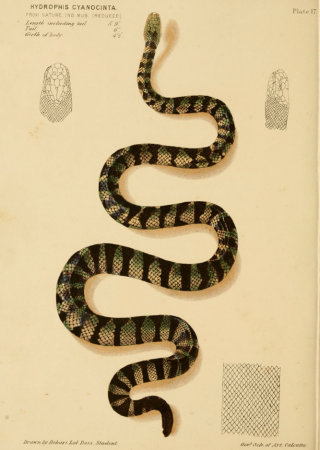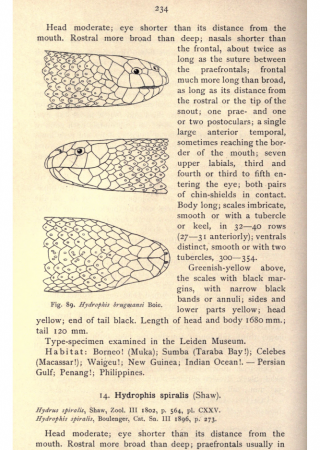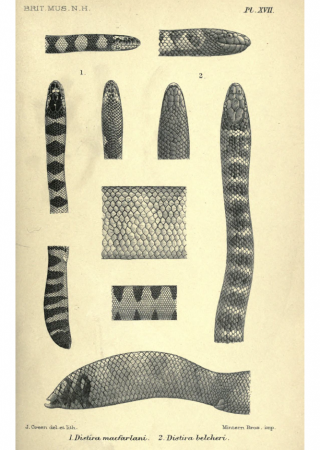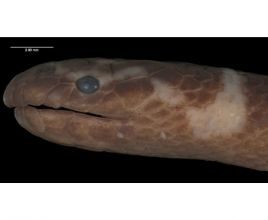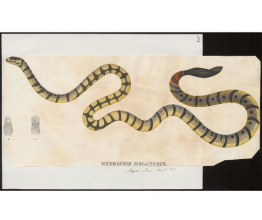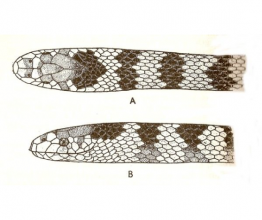Belcher's sea snake
- ...sea snakes are among the most poisonous snakes, whose venom is more dangerous than the cobra or mamba?
- ...all sea snakes give birth to live young and do so in the water?
- ...sea snakes have completely lost the ability to move on dry land?
- ...sea snakes often travel in large swarms, the largest known of which had around one million individuals and was over a kilometer long?
- ...the people most commonly bitten by sea snakes are fishermen, who often have to remove them from their nets?
- ...sea snakes can even sleep under water, although they are air-breathers?
- ...sea snakes, like cobras and mambas, belong to the Elapidae family?
Imagine that you are swimming somewhere in tropical waters, for instance, near the Philippine islands, and suddenly you spot a sea snake, swimming only a short distance away. You panic and try to swim away, and without warning, it bites you. Fortunately, the bite doesn't hurt, so you quickly forget about it. However, sea snake venom is a potent neurotoxin, so you soon begin to lose feeling in your lower extremities, stomach, up to your lungs, and you slowly suffocate. Despite this, sea snakes are not usually aggressive and rarely attack humans without provocation; an exception may be during mating season. Since they primarily eat fish, they have small mouths and very short poison fangs, which are usually too short to penetrate a diver's wetsuit.

